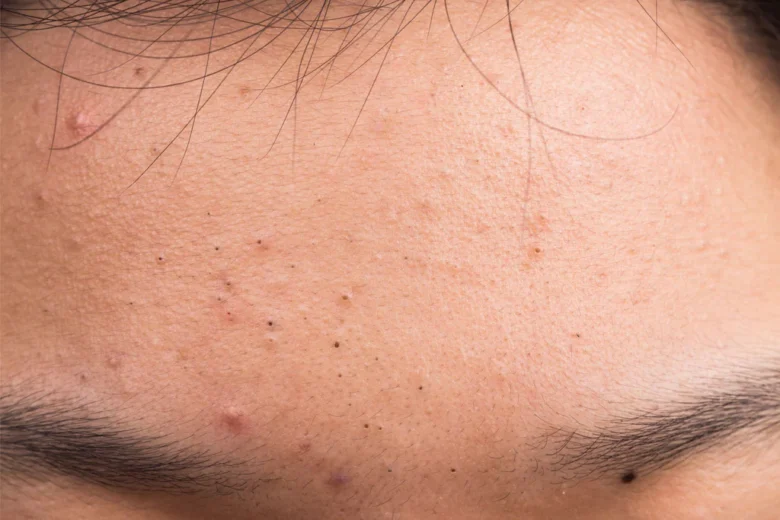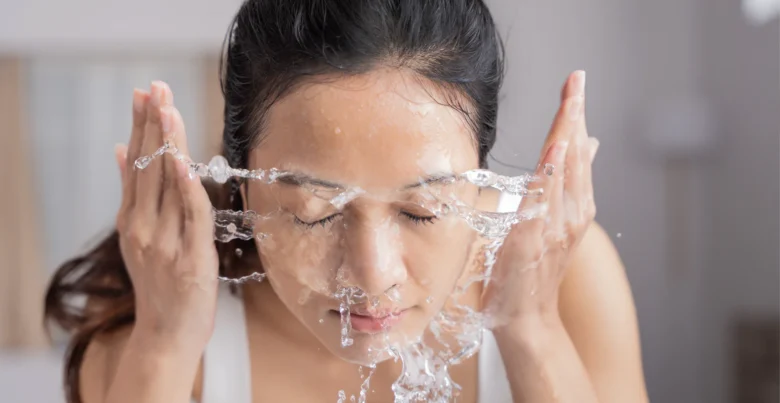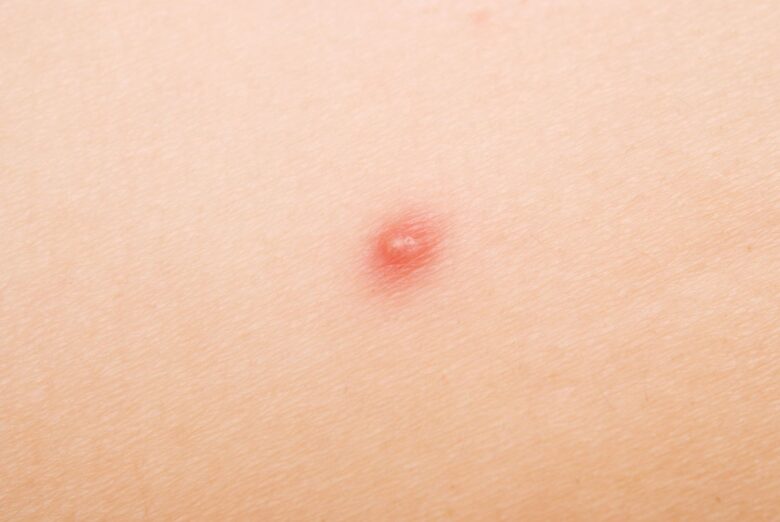Pimples, those pesky little blemishes that can pop up at the most inconvenient times, are a common skin concern for many people. While they all may look similar at first glance, pimples can come in various types, each requiring a specific approach to treatment. In this blog, we’ll explore 9 types of pimples and offer some guidance on how to effectively treat them for clear, healthy skin.
1. Whiteheads (Closed Comedones)
When pores get blocked with oil and dead skin cells, whiteheads develop. Tretinoin can help by promoting skin cell turnover, preventing clogs, and encouraging the shedding of dead skin cells. Apply a pea-sized amount of tretinoin cream or gel to the affected area before bedtime.
2. Blackheads (Open Comedones)

Blackheads and whiteheads both result from clogged pores. By lowering the accumulation of oil and dead skin cells, retinol can help prevent and treat blackheads. As advised by your healthcare provider, use tretinoin.
3. Papules
Papules are small, red, raised bumps that can be painful. Tretinoin can help by reducing inflammation and promoting skin healing. Apply a thin layer to the affected area, but avoid excessive rubbing,
4. Pustules
Pustules are red bumps with a white or yellow center filled with pus. They are often painful and are usually a sign of bacterial infection. To treat pustules, keep the area clean, apply a warm compress to reduce inflammation, and consider benzoyl peroxide or topical antibiotics.
5. Cysts
Nodules and cysts are similar, but cysts are bigger and contain pus. They can be extremely painful and may leave scars if not treated properly. Dermatological intervention is usually necessary, involving drainage and sometimes oral medications like isotretinoin.
6. Cystic Acne
Cystic acne is a severe form of acne characterized by multiple cysts and nodules. It often requires systemic treatments like oral antibiotics, hormonal therapy (for females), or isotretinoin. For a customized treatment strategy, talk to a dermatologist.
7. Comedonal Acne

Comedonal acne primarily consists of whiteheads and blackheads. Topical treatments with salicylic acid or retinoids are effective for clearing comedonal acne. Regular exfoliation can also help prevent new comedones from forming.
8. Hormonal Acne
Hormonal acne, often seen in females, is influenced by hormonal fluctuations. Birth control pills, anti-androgen medications, or spironolactone may be recommended to regulate hormones. Consult a medical professional for a personalised course of therapy.
9. Acne Rosacea
Acne rosacea is a chronic skin condition that causes redness and pimple-like bumps, primarily on the face. Treatment may include topical and oral antibiotics, as well as lifestyle modifications to reduce triggers like alcohol and spicy foods.
Preventing Pimples: Tips for Clearer Skin
1. Maintain a Consistent Skincare Routine
Get a customized treatment plan by consulting a dermatologist. Here’s a basic routine to follow:
- Cleansing: Use a gentle, pH-balanced cleanser to wash your face twice a day (morning and night). Cleansing helps remove dirt, excess oil, and impurities from your skin.
- Exfoliation: Exfoliate your skin 1-2 times a week to remove dead skin cells. Avoid aggressive scrubs and opt for chemical exfoliants like alpha hydroxy acids (AHAs) or beta hydroxy acids (BHAs).
- Moisturizing: Even if you have oily skin, moisturizing is essential. Choose a non-comedogenic (won’t clog pores) moisturizer to keep your skin hydrated.
- Sun Protection: Apply sunscreen with at least SPF 30 daily, as sun exposure can worsen acne and cause pigmentation issues.
2. Diet Matters

Your diet can play a significant role in preventing pimples. Focus on the following:
- Hydration: Drink plenty of water to keep your skin well-hydrated and flush out toxins.
- Balanced Diet: Consume a diet rich in fruits, vegetables, whole grains, and lean proteins. Avoid excessive sugar and processed foods, as they can trigger acne.
- Omega-3 Fatty Acids: Incorporate foods like fatty fish (salmon, mackerel), flaxseeds, and walnuts into your diet. Acne can benefit from the beneficial benefits of omega-3 fatty acids.
3. Hands Off Your Face
Avoid touching your face with your hands, as they carry bacteria and oils that can worsen acne. Picking or squeezing pimples can lead to scarring and more breakouts. Make sure your hands are clean before touching your face if you must.
4. Use Non-Comedogenic Products
When selecting skincare and makeup products, choose those labeled as non-comedogenic. These products are formulated to minimize the risk of clogging pores and causing acne.
5. Manage Stress
Stress can trigger hormonal changes that lead to acne breakouts. Incorporate stress-management techniques like meditation, yoga, or deep breathing exercises into your daily routine to help keep stress levels in check.
6. Cleanse After Exercise
Sweating during exercise can contribute to acne. After a workout, cleanse your face to remove sweat and bacteria that may have built up on your skin.
7. Avoid Overwashing

While keeping your skin clean is important, overwashing can strip your skin of its natural oils, leading to increased oil production and potential breakouts. Limit your cleansings to no more than two each day.
8. Seek Professional Help
If you’ve tried various over-the-counter products and home remedies without success, it’s a good idea to consult a dermatologist. They can recommend prescription medications or treatments tailored to your specific skin type and needs.
Conclusion
Pimples can take on various forms and require different approaches to treatment. While mild cases of whiteheads and blackheads can often be managed with over-the-counter products, more severe forms like cystic acne and nodules may necessitate professional medical intervention. The key to successfully treating pimples is consistency, patience, and, when needed, seeking advice from a dermatologist to develop a tailored skincare regimen. Remember, proper skincare and a healthy lifestyle can go a long way in preventing pimples from forming in the first place.

